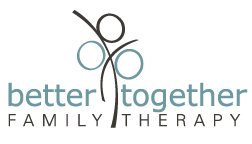A Full Day of Gratitude (for kids) from our Child Therapists
Child therapists know that practicing gratitude daily has been proven to support good mental health. We authored this post for adults last Thanksgiving. This year it’s time to bring the kids on board!
Guide your child through a thankful day: Our Child Therapists in Montgomery County, MD tell you how
This is how a child therapist would walk your child through a day of gratitude. Try a few of these ideas. Or see if you can fit them ALL into a single day.
Gratitude is about noticing things that are already happening. So is mindfulness. Most of these tasks also function as mindfulness activities that could be done every day.
They have been worded in the way you’d say them to your child. But they work best if you do them together.
It’s time to get up! Thank your bed for being so cozy before you climb out.
Thank your child for enjoying this day with you.
Grow taller by reaching your arms up high. Thank your muscles for helping you do it.
Now let your arms and legs get floppy. Do they feel warm and tingly? That’s your body keeping you healthy. Thanks, body!
Tiptoe or walk in slow motion toward your shower or breakfast. Feel the floor supporting your feet.
Enjoy the smell of your soap while you wash. What does it remind you of? Are there any bubbles? Pop them and see if it makes you giggle.
Smile into the mirror. Notice the sparkle in your eyes.
Taste your food. Thank the person that made it. (Even if it’s yourself).
Say hi to a friend. Think about how lucky you are to have a friend.
Pet your pet. Thank them for being in your family.
Step outside. Thank the sunshine, the rain, or the breeze for greeting you.
Do your favorite gymnastics trick or dance move. Cheer for yourself.
Look for something that’s your favorite color. Say “thank you eyes” when you spot it.
Do some schoolwork or read a book. Remember when you couldn’t do that. Thank your brain for learning so much.
Think of 3 things you like about your school.
Think of someone who helped you today. Thank them if you can.
Look for an interesting cloud in the sky. Thank your creativity for the picture you see.
Do something silly. Enjoy it.
Find something soft to touch, like a blanket or stuffed animal. Hold it for as long as you want.
Take a deep breath. Thank your breath for giving you energy.
Thank your socks or sweater for keeping you warm today, or your awesome shades for keeping you cool.
Thank your parents for the house you live in. Tell them what part of the house is your favorite.
Tell someone about the best part of your day. Listen to them as they do the same.
Listen to a favorite song or sound as you fall asleep. Smile softly to yourself.
What was your favorite part of doing this with your child? Take a moment to enjoy the connection you felt today. Think of one thing you could do to stay connected tomorrow.
But how do I get my child to listen to me? Here’s what our Family Therapists say.
Family life is made of small moments. And the choices we make within them. Engaging with your child in one of the activities above is a choice to connect with your child.
All of the tiny moments of connection add up to a joyful relationship. But there’s a trick to it. You have to keep doing them day after day after day.
You don’t have to keep doing the same tasks. Just any small tasks that build connection. Do them more often than you give task demands like “do your homework” or “clean up your stuff.”
Is it really that simple? YES. Need them to pick up their shoes? Make sure you’ve had some moments of connection already today when you ask.
If you haven’t, create a quick moment of connection first. Or postpone the task to a little later in the day, after you’ve had a chance to connect. Tasks like these are rarely time sensitive emergencies.
And you’re much more likely to have your child’s compliance when the relationship is strong.
It does get trickier sometimes. Like when you’re parenting a teen or a child with ADHD.
What works when you’re parenting a child with ADHD? Our Montgomery County ADHD therapists say…
If your child has ADHD or executive function challenges, you’ll need some extra tools. It might look like your child doesn’t want to do what you’re asking. But that’s not usually the case.
See our post “How to Stop Reminding Your Child“ for a unique strategy that’s ADHD-friendly. And of course, if you’d like more personalized support, don’t hesitate to reach out for a free consult.

